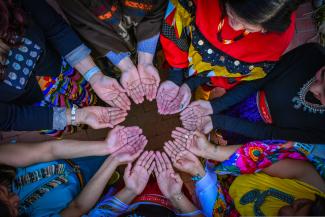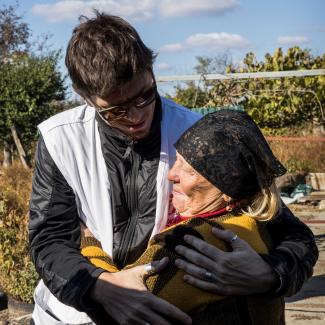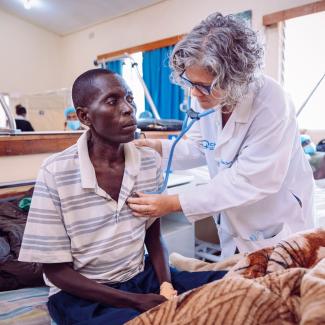Earlier this year, Nicolle L. Arthun, founder of Changing Woman Initiative and CEO of Transcending Strategies, was in Scotland learning about the collaborative approach of midwives there. Their care teams include a consulting midwife who creates a labor plan, based on the patient's preferences and clinical best practices, and communicates it to other midwives and the receiving hospital.
This commitment enables pregnant people to give birth where they want to—even if they choose "out of guidelines" care, such as giving birth to twins at home. Arthun, referencing the evidence for this consulting midwife role, sees its potential to provide necessary and supportive care to Native American women.
In May, Arthun was one of several maternal health champions who were given a new platform at the National Tribal Health Conference in Rapid City, South Dakota. Hosted by the National Indian Health Board (NIHB), the issue of reclaiming traditional birthing practices and improving maternal outcomes for Native women was highlighted both in a preconference institute and as the first panel at the opening plenary.
A Diné nurse-midwife from the Navajo Nation, Arthun is board treasurer of the Groundswell Fund and codirector of the Improving Perinatal Health ECHO program. She received her bachelor of nursing and master of nurse-midwifery from the University of New Mexico. Though her dream to establish the first Indigenous birth center in the United States has yet to be realized, Arthun's work continues to advance Native women's sovereign right to experience birth as ceremony.
□ □ □ □ □ □ □ □ □ □ □ □ □ □ □
Think Global Health: You've been engaged in maternal health work in Native communities for 20 years. What initially drew you to the field?
Arthun: I had always heard stories from my mom and my aunts about their birth experiences not being very positive. There were lots of visual cues around what was normal birth for our community growing up. I feel as if Native American women normalized the medicalization of birth because that's all they knew.
It didn't even hit me until I was working as a nurse and training as a midwife. I learned about all these other ways women felt supported in their pregnancy, and weren't afraid, and had options. They came away from birth feeling very empowered and supported. No one in my family talked about birth that way.
I learned about all these other ways women felt supported in their pregnancy, and weren't afraid, and had options
Nicolle L. Arthun
Think Global Health: Could you tell me about your training to become a nurse midwife, especially the dual nature of your role as a birth worker with both medical and spiritual expertise?
Arthun: Everyone becomes a midwife for different reasons. Mine was to have the flexibility to work in any setting, whether a hospital, a birth center, or a home birth setting. I knew about the debate around credentials, and already felt that it was going to be an uphill battle to create a new way to take care of Native women. That's why I chose the nurse midwife pathway. It's important to say that because criticism within Indigenous birthworker spaces is that we're too medicalized.
As far as this other side of me that's got traditional roots—meaning ceremony, herbs—is concerned, I had to work on my own building relationships with healers, plant medicine folks, going to my community to ask and learn about birthing practices and what they used to look like. It's not one person that has that information.
Think Global Health: Changing Woman Initiative was founded eight years ago. Can you tell me what your goals were at the time?
Arthun: As a midwife, as a student, as a nurse in my community, I witnessed the lack of culturally centered and respectful care for Native families in New Mexico and across the United States. My goal initially was to create the first birth center that was Native and Indigenous-led and that integrated Western and traditional medicine to provide maternal health care in our community.
That vision shifted because there were so many gaps. Fewer than 1% of midwives identify as Indigenous, Native American, or Pacific Islander. How are you going to run a birth center if you don't have Native, Indigenous midwives? Where would this birth center be built if it were to serve tribally enrolled members? On tribal lands or private land?
There's also the cost of a birth center. Native American people are insured primarily through the Indian Health Service (IHS). Because there's a health-care desert around maternal health developing in many parts of the United States, the majority of IHS facilities don't provide birth services. In that case, most Native people are signed up for Medicaid. To have a sustainable birth center, you have to think about how you underwrite the costs of care, knowing you're going to care for people who don't have good reimbursement.
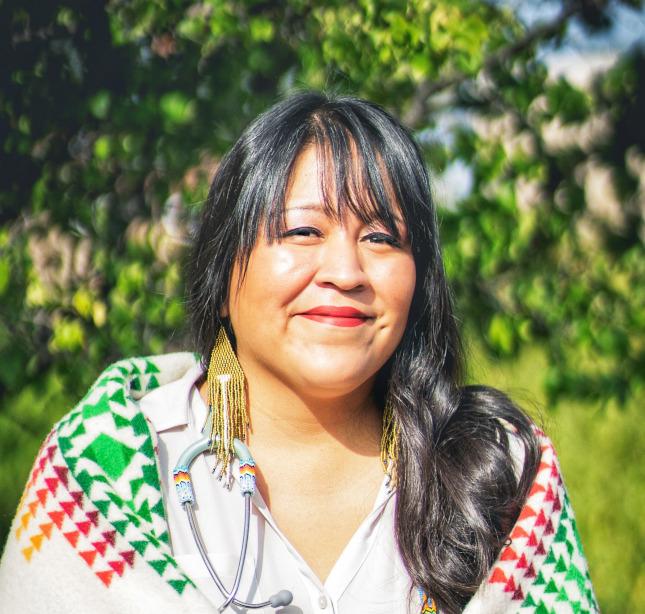
Think Global Health: Tell me about Transcending Strategies and what you're hoping to achieve through this new organization?
Arthun: The work I was doing with Changing Woman was amazing and foundational but took so much of my time. I wanted to inspire others and to create a model that could be shared with tribes and organizations interested in doing something similar in their communities. But I couldn't work with other communities because I didn't have the capacity. I was that leader saying yes to doing everything, and I've had to create some boundaries.
Transcending Strategies is focused on organizational design and leadership support. There's a real thought process around how you design your organization to do what it's intended to do. The other part is the leadership piece. A lot of us who start this work are inspired by our personal experiences or what's happening politically. My point in working with leaders is for them to develop trust in themselves, because when you're doing something innovative and different, a lot of people tell you, "You can't do it."
Think Global Health: Can you talk about the momentum at the NIHB conference, the Tribal Maternal Health Institute, and also the opening plenary panel focused on maternal and infant health?
Arthun: When I started to work on Changing Woman Initiative, a reporter had some information from the CDC [Centers for Disease Control and Prevention] and was like, "Oh my gosh, it's so bad. Native women have the second highest maternal mortality rate to Black women. Why is that?" So I spoke about some of the things that I witnessed in community around these challenges to help give context to the data.
I wanted to inspire others and to create a model that could be shared with tribes and organizations
Nicolle L. Arthun
It's been very intentional for me to build momentum, so it was really amazing to meet other champions of maternal health and to hear them talk about the data. Ten years ago, this space wasn't here.
Think Global Health: You gave some powerful directives to tribal leaders about paying attention to maternal health. Did you get any responses to that?
Arthun: I did. I had the Department of Health leader from Navajo Nation come up to me after the plenary and say, "We're going to do maternal health-focused work and I would love to make you part of it."
She was ready to set the intention to do that work on Navajo, which is great; I've not seen anybody do that yet. I did get invited to speak to a tribe in California about maternal health later this year. So, they're listening.
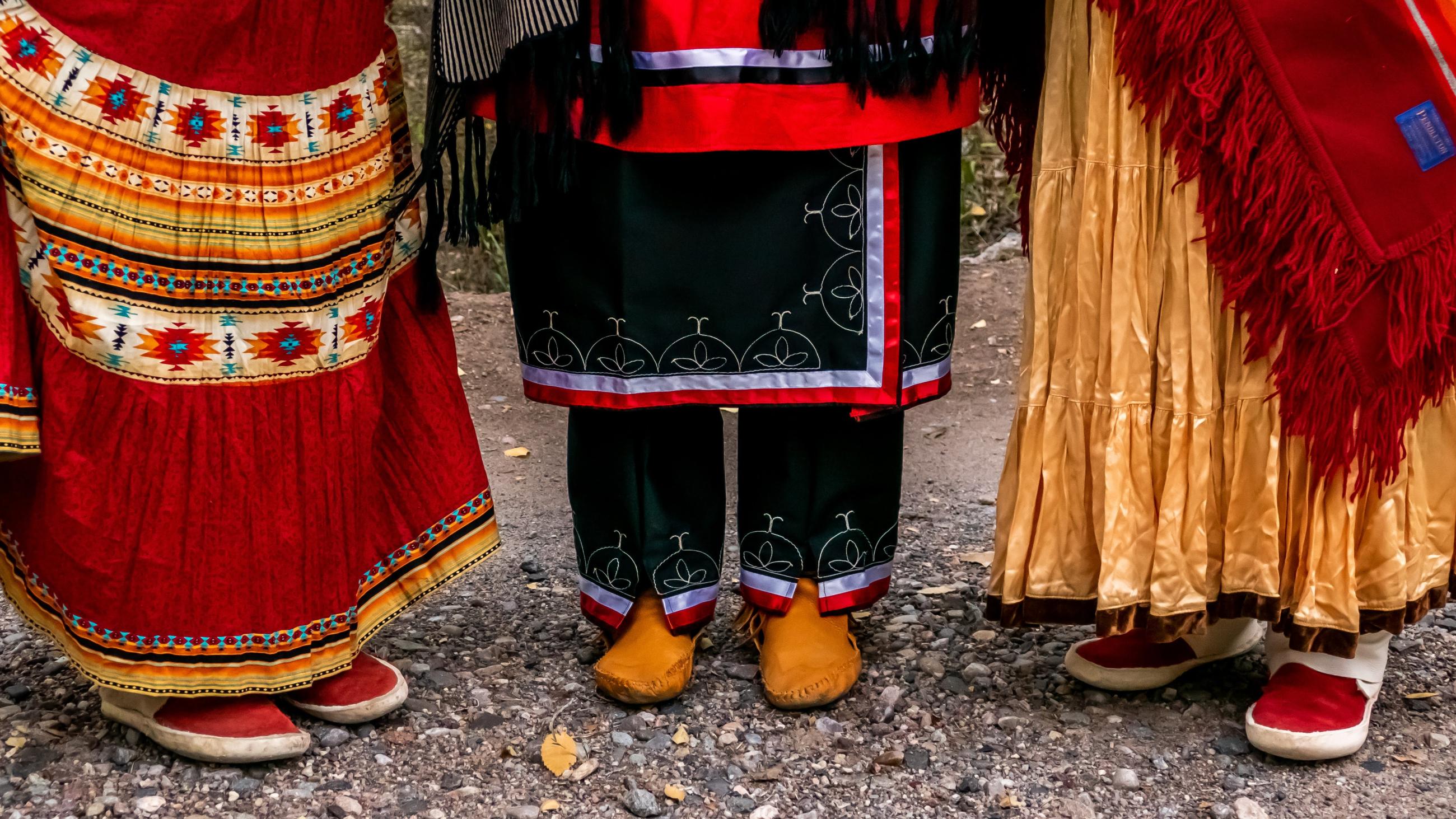
EDITOR'S NOTE: This interview was conducted via Zoom and has been edited for length and clarity.
